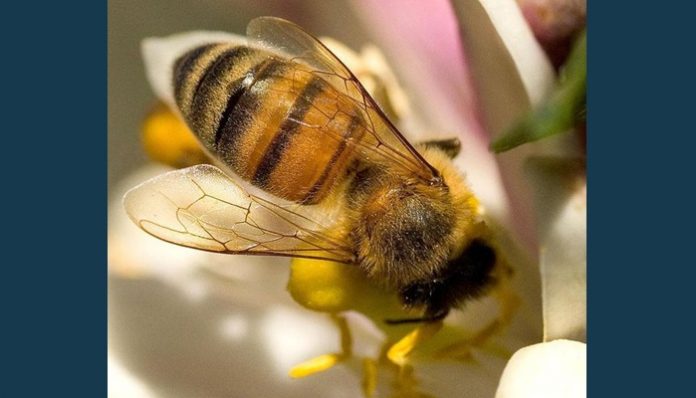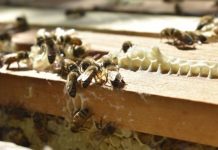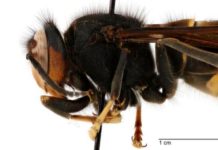April 28 (UPI) — After an extensive scientific review and intense debate, the European Commission, a legislative body of the European Union, voted on Friday to ban three neonicotinoid insecticides blamed for killing both wild bees and honeybees.
Farmers and gardeners in Europe will no longer be able to spray the pesticides clothianidin, imidacloprid and thiametheoxam outdoors. The chemicals can still applied inside permanent greenhouses.
“Bee health remains of paramount importance for me since it concerns biodiversity, food production and the environment,” Vytenis Andriukaitis, the EU commissioner for Health and Food Safety, said in a statement.
An assessment published earlier this year by the European Food Safety Authority determined neonicotinoids pose a risk to wild bees and honey bees. The assessment was based on a survey of the scientific literature on the subject, which is extensive.
Dozens of studies have detailed the negative impact neonicotinoids have on bee health. Most of the scientific findings suggest pesticides harm bees’ immune system, robbing them of their ability to fight off disease and parasites.
Some studies have linked pesticide exposure with declines in the health of bees’ gut microbiome, while others have shown the chemicals diminish the ability of bees to find nectar.
Though neonicotinoid makers and some agricultural groups opposed the measure, the vote has earned applause from environmental groups and many scientists.
“Neonicotinoids not only contaminate plants, soil, and water, but surprisingly, they stay in the water and soil for a long time after they are sprayed,” James Nieh, a biologist at the University of California San Diego, told The Independent. “These chemicals drift outside of their application areas, as has now been demonstrated in multiple studies.”
While neonicotinoids have been linked with the decline of a number insects, including several kinds of pollinators, they’re not the lone threat to bee populations. Monoculture farming practices and loss of habitat have also been cited as serious impediments to bee health. When combined, the multiple threats can prove deadly to bees.



